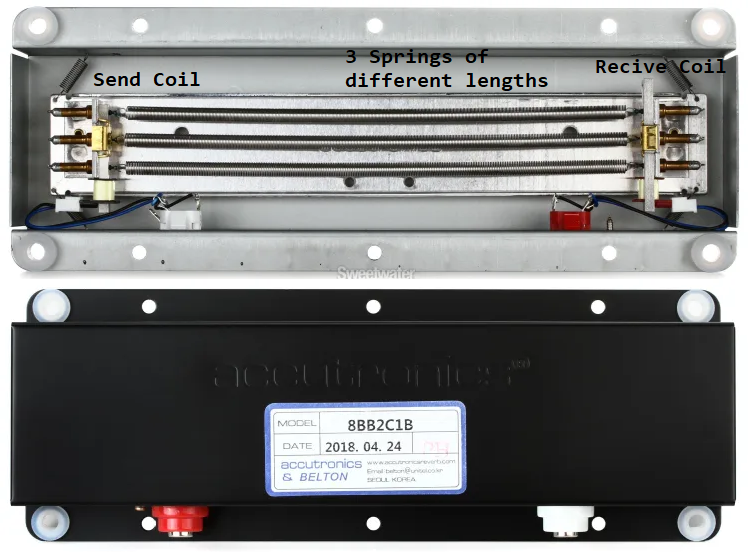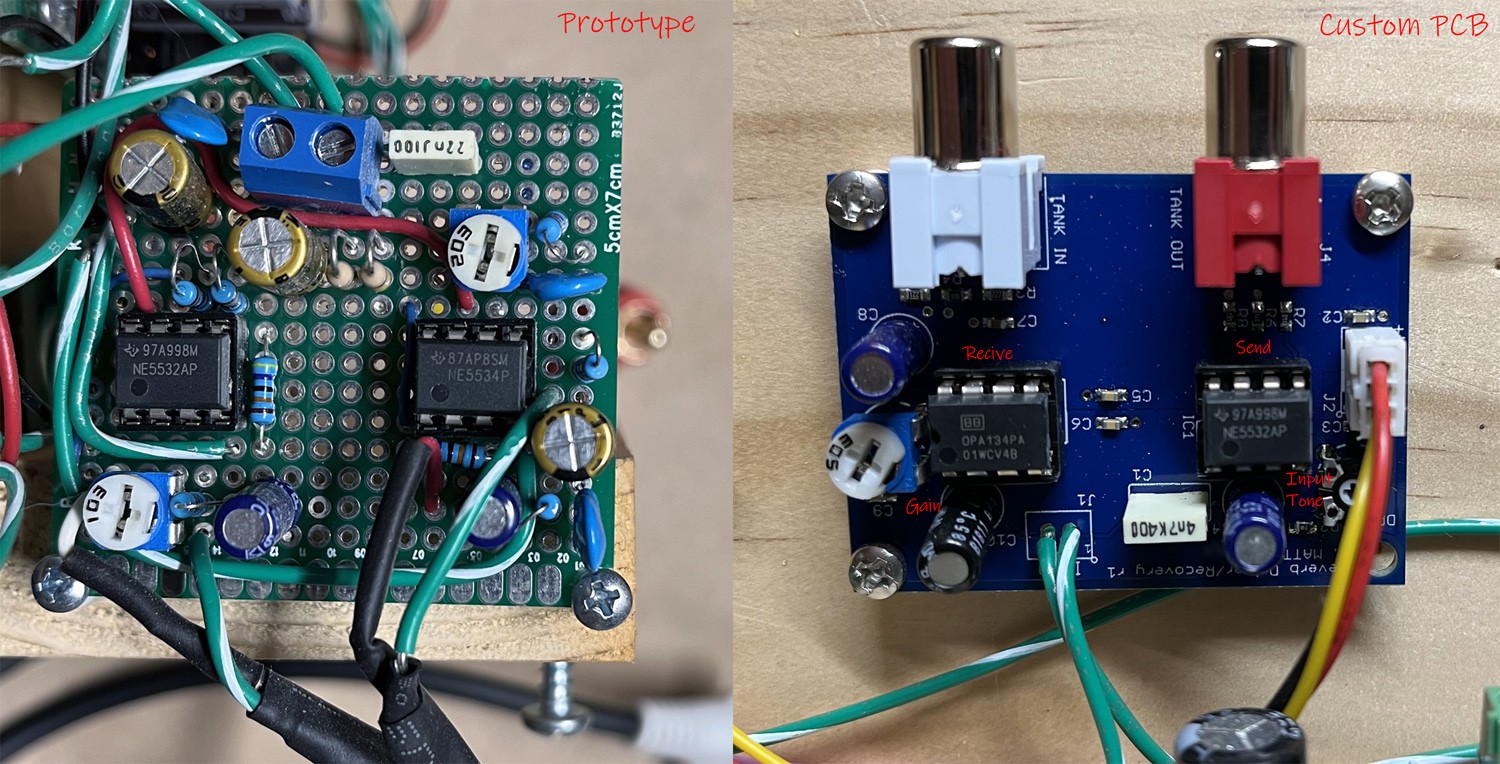I'll assume you know what reverb is if you are here, but what is a reverb tank? Modern effect pedals use electronics to create short delays creating the effect of sound reverberating around a room.
Originally the reverb sound was created by sending sound-waves down a physical spring, and reviving them at the other end, causing a delay and muddying of the sound. Modern digital systems mimic this really well, but the analog systems are not very expensive so often guitar amps still use analog spring tanks like the image below.

Here is a decent page about all this, my circuit is based strongly on the solid state examples given.
To drive these mechanical systems requires a low impedance source, and to receive the return signal requires a high gain stage. Like most modern amplifiers I chose to use solid state components (Op-Amps) here because it is not critical to the drive or sound of the amplifier, and it is significantly cheaper, smaller and easier.
It is also worth noting reverb tanks technically have a mounting direction, mine is upside down in the head unit I have pictured here. Looking at the unit itself, I'm not sure how much of a difference it makes, it appears the chassis has multiple mounting points that would help fight gravity in different mounting positions, I made no changes as the springs in this orientation appear to still be centered inside of the transducers. It sounds fine, but an A/B comparison was not done.
Below is the resulting prototype board, and the final PCB, and the schematic follows.


 Collin Matthews
Collin Matthews
Discussions
Become a Hackaday.io Member
Create an account to leave a comment. Already have an account? Log In.